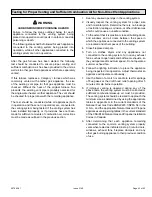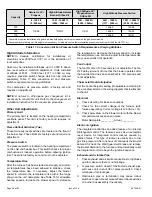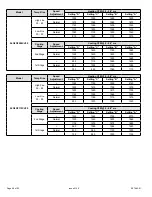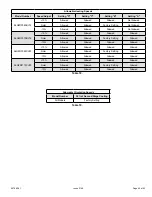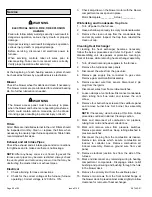
507962-01
Page 40 of 53
Issue 2149
Connect the desired speed tap to the “EAC” terminal and
the neutral tap to the neutral terminal on the ignition control
(refer to the furnace wiring diagram). The ignition control
will control the motor’s operation, including a nominal 20
second “on” delay with a call for heat and a nominal 180
second “off” delay when the thermostat is satisfied. It will
also operate the motor on a call for cooling, with no “on” or
“off” delays.
Verify that the unit is operating at the desired speed and
within the rise range as shown on the unit rating plate.
The correct replacement motor must be installed as soon
as possible to ensure continued satisfactory operation of
the furnace.
Control Diagnostics
Troubleshooting
Make the following visual checks before troubleshooting:
1. Check to see that the power to the furnace and the
integrated ignition/blower control board is ON.
2. The manual shutoff valves in the gas line to the furnace
must be open.
3. Make sure all wiring connections are secure.
4. Review the Sequence of Operation.
Start the system by setting thermostat above room
temperature. Observe system response. Then use the
information provided in this section to check the system
operation.
The furnace has a built-in, self-diagnostic capability. If a
system problem occurs, a fault code is shown by a red LED
on the control board. The control continuously monitors its
own operation and the operation of the system. If a failure
occurs, the LED will indicate the failure code. The flash
codes are presented in Table 12.
Fault Code History Button
The control stores the last five fault codes in memory. A
push button switch is located on the control. When the
push button switch is pressed and released, the control
flashes the stored fault codes. The most recent fault code
is flashed first; the oldest fault code is flashed last. To
clear the fault code history, press and hold the push button
switch in for more than 5 seconds before releasing.
High Heat State LED
On 96G2DFV models, a green LED is provided on the
control board to indicate high heat state (see Table 13).
CFM LED
On 96G2DFV models equipped with a variable speed
motor, an amber LED is provided on the control board to
display CFM. To determine what CFM the motor is delivering
at any time, count the number of times the amber LED
flashes. Each flash signifies 100 CFM; count the flashes
and multiply by 100 to determine the actual CFM delivered
(for example: 10 flashes x 100 = 1000 CFM).
Table 12.
Failure Codes - Red LED
LED Status
Fault Description
LED Off
No power to control or control
hardware fault detected
LED On
Normal operation
1 Flash
Flame present with gas valve off
2 Flashes
Pressure switch closed with inducer off
3 Flashes
Low-fire pressure, rollout, or aux limit
switch open
4 Flashes
High limit switch open
5 Flashes
Not used
6 Flashes
Pressure switch cycle lockout
7 Flashes
Lockout due to no ignition
8 Flashes
Lockout due to too many flame
dropouts
9 Flashes
Incorrect polarity and phasing
Table 13.
High Heat State - Green LED
LED Status
Description
LED Off
No demand for high heat
LED On
High heat demand, operating normally
LED Flashing
High heat demand, high pressure
switch not closed


















